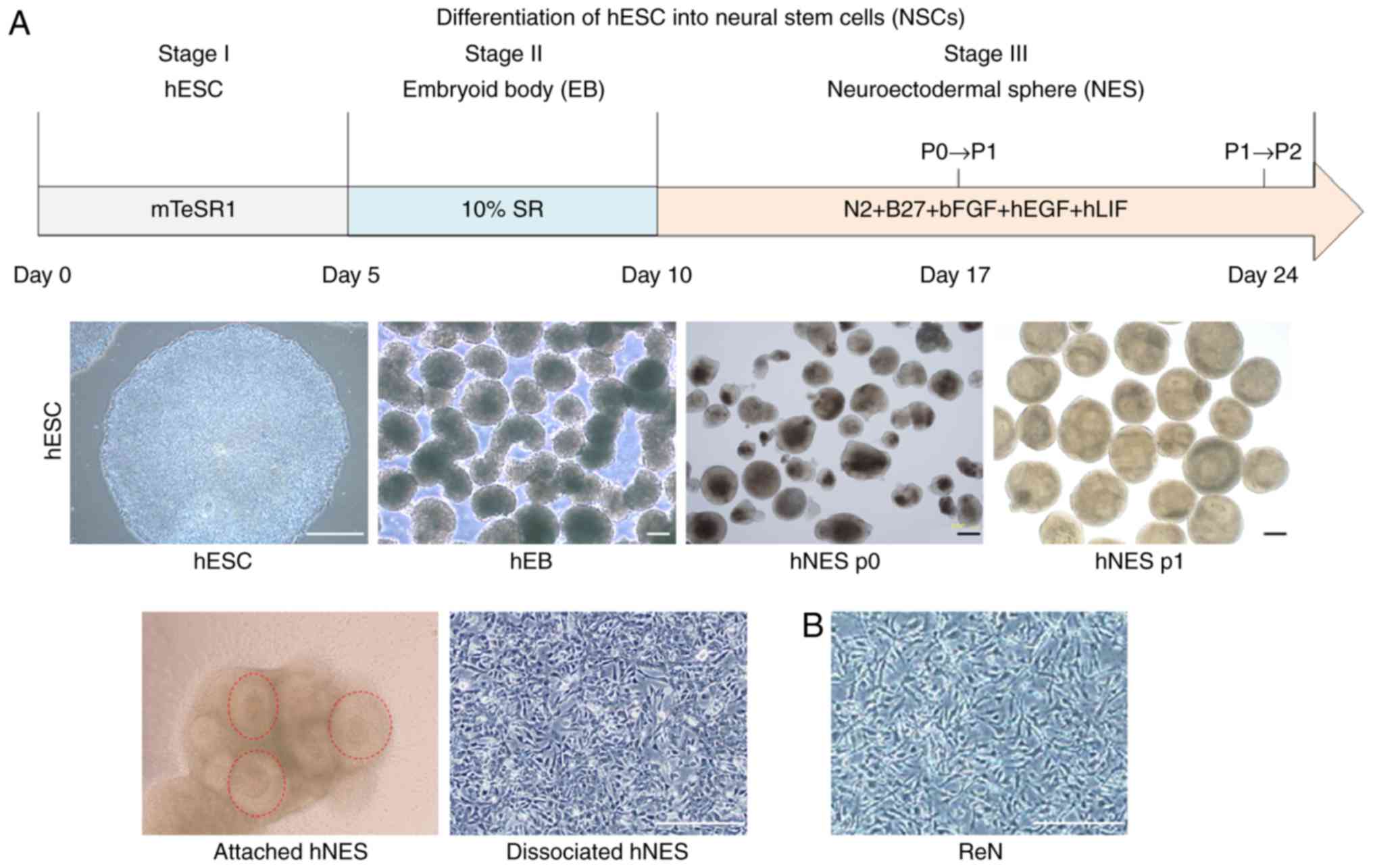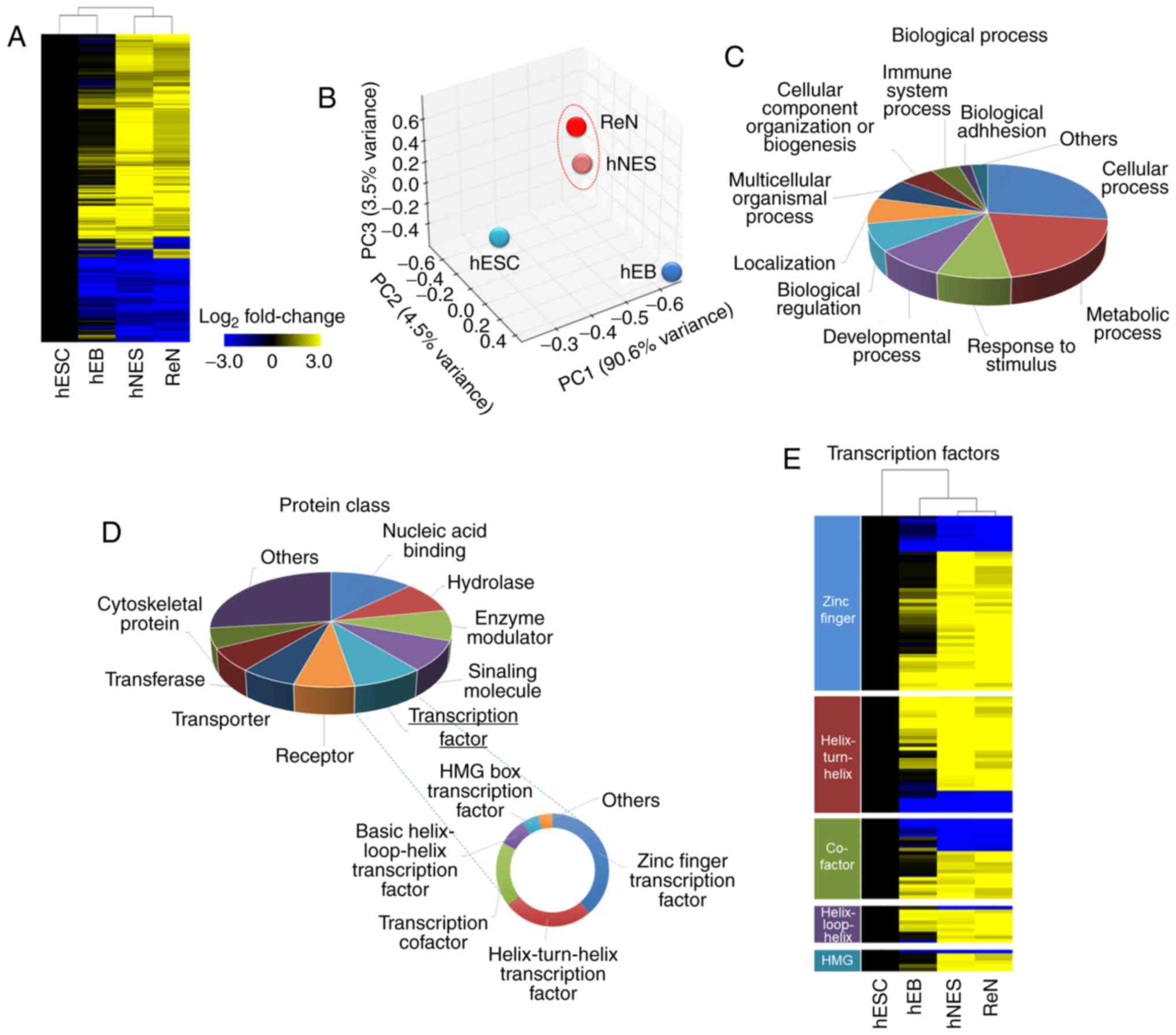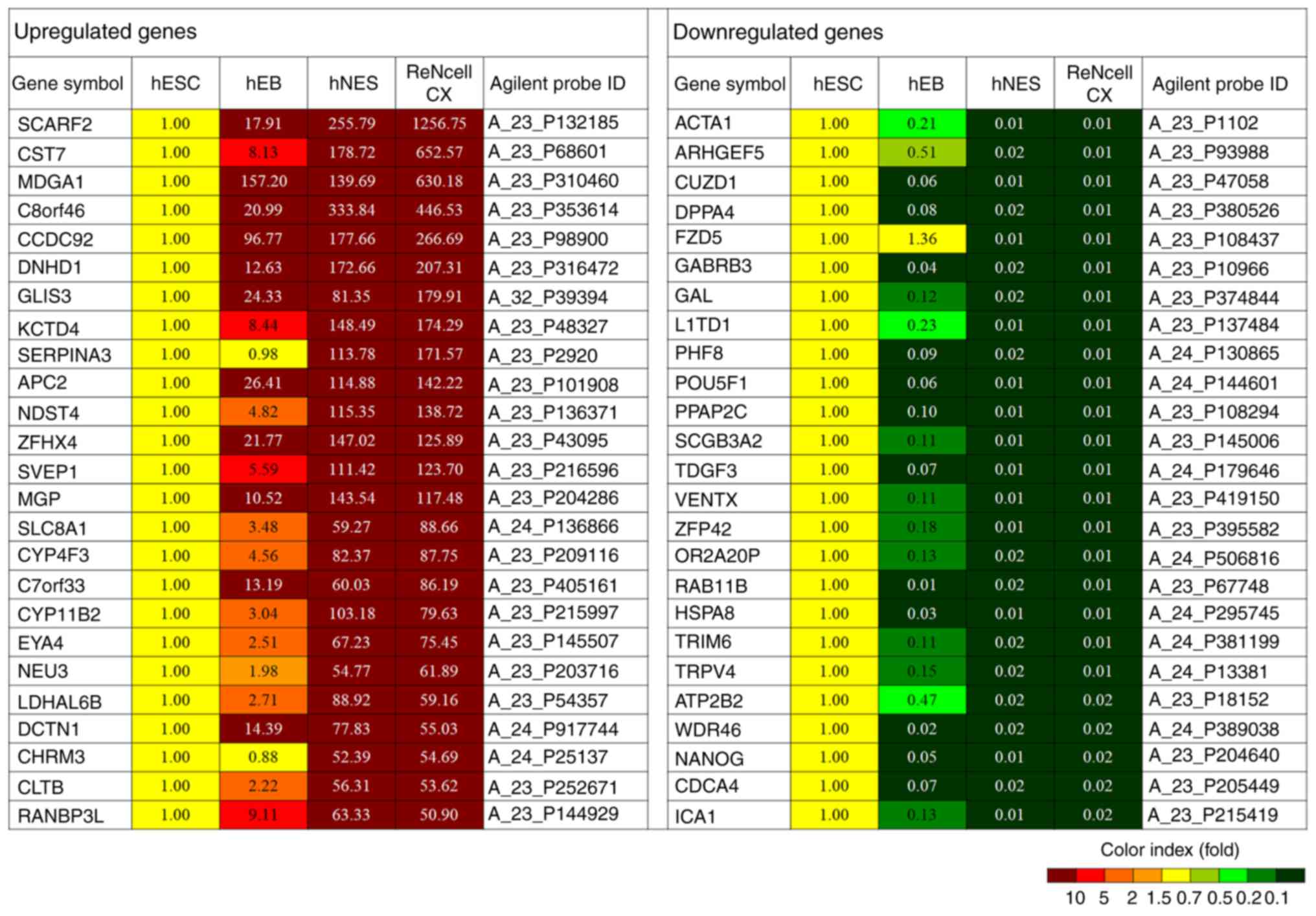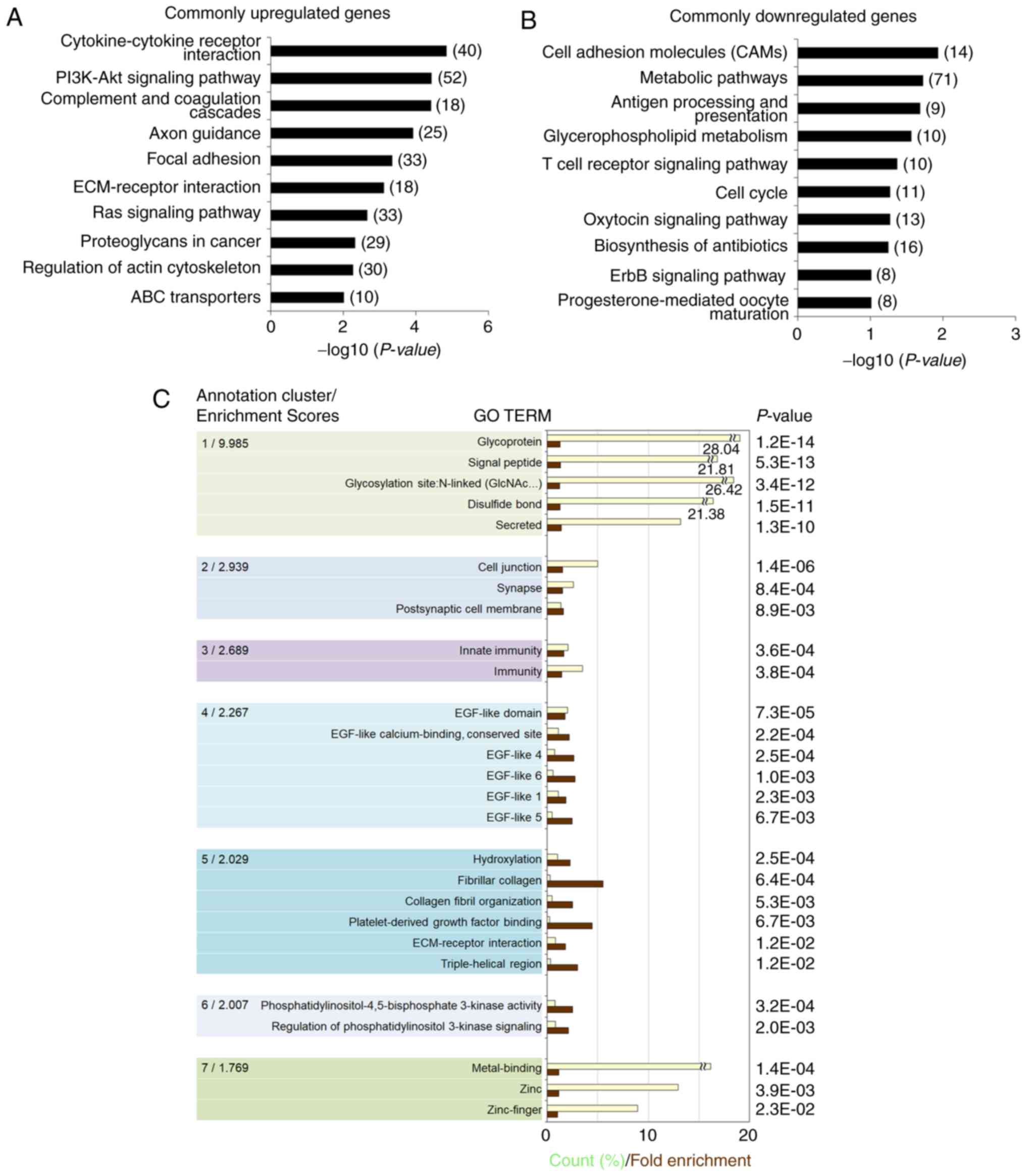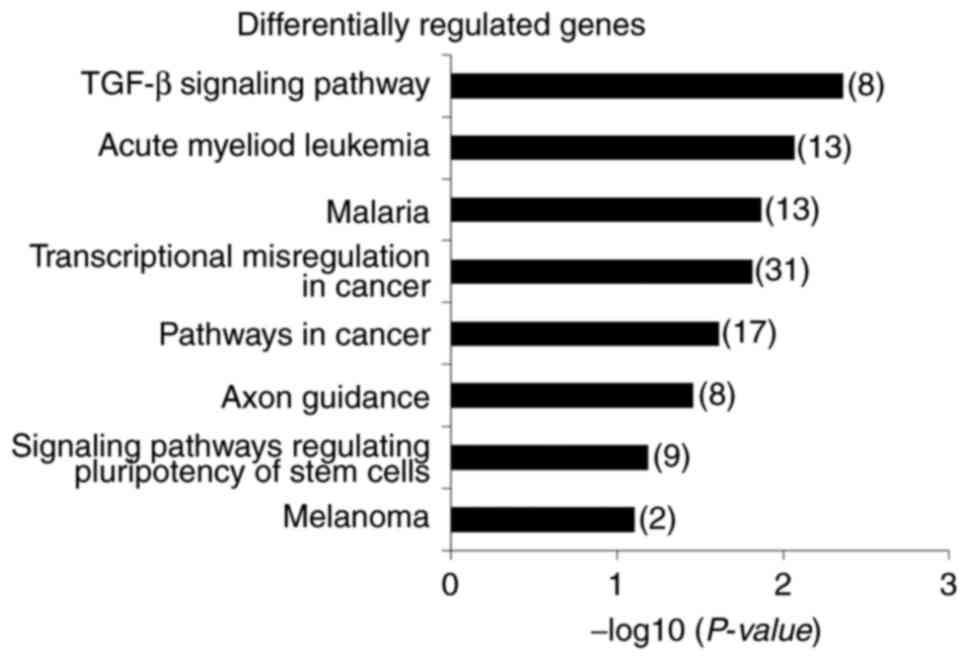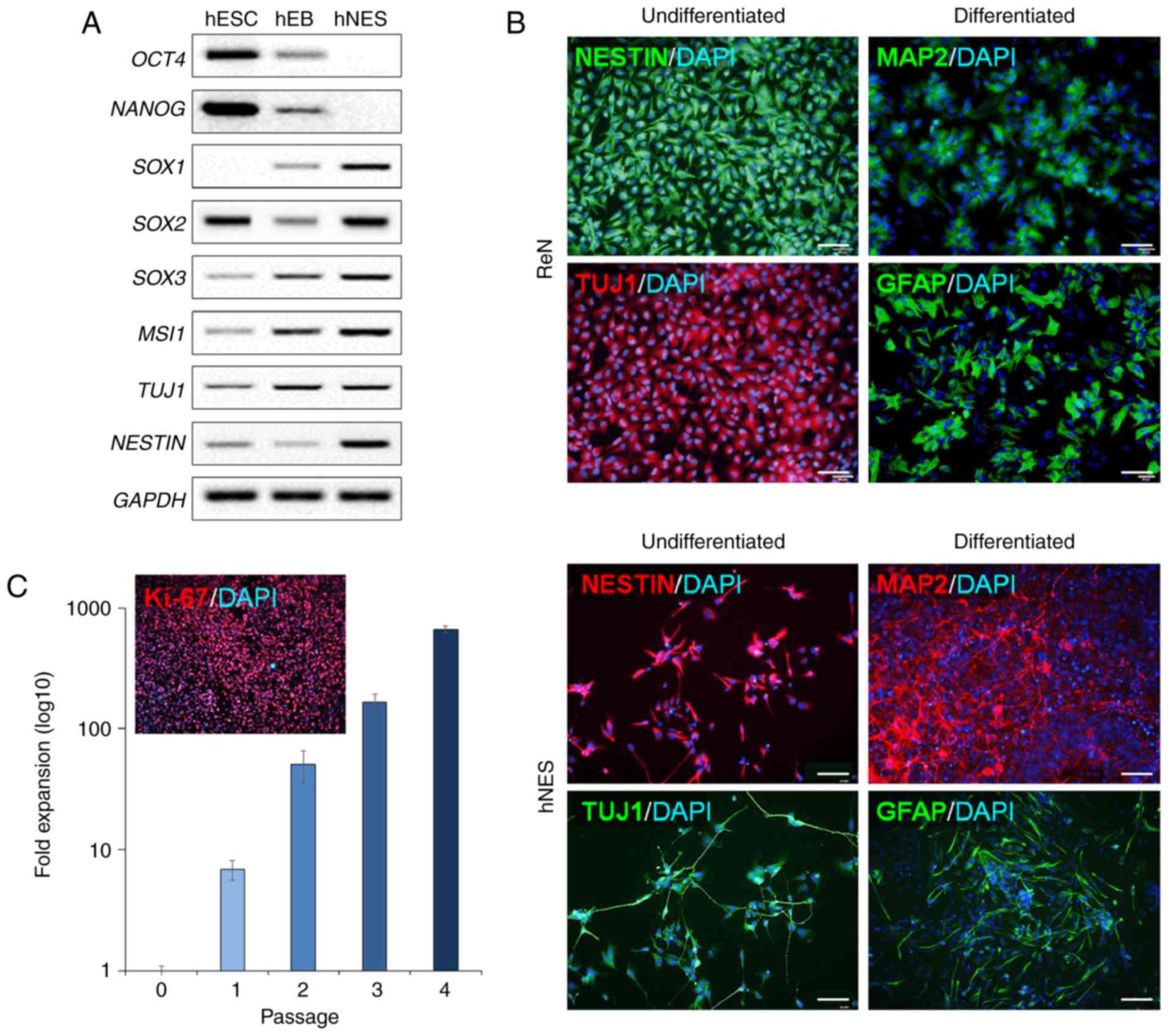|
1
|
Oh JH, Son MY, Choi MS, Kim S, Choi AY,
Lee HA, Kim KS, Kim J, Song CW and Yoon S: Integrative analysis of
genes and miRNA alterations in human embryonic stem cells-derived
neural cells after exposure to silver nanoparticles. Toxicol Appl
Pharmacol. 299:8–23. 2016. View Article : Google Scholar
|
|
2
|
Son MY, Sim H, Son YS, Jung KB, Lee MO, Oh
JH, Chung SK, Jung CR and Kim J: Distinctive genomic signature of
neural and intestinal organoids from familial Parkinson's disease
patient-derived induced pluripotent stem cells. Neuropathol Appl
Neurobiol. 43:584–603. 2017. View Article : Google Scholar : PubMed/NCBI
|
|
3
|
Otsu M, Nakayama T and Inoue N:
Pluripotent stem cell-derived neural stem cells: From basic
research to applications. World J Stem Cells. 6:651–657. 2014.
View Article : Google Scholar : PubMed/NCBI
|
|
4
|
Zhao X, Yang Z, Liang G, Wu Z, Peng Y,
Joseph DJ, Inan S and Wei H: Dual effects of isoflurane on
proliferation, differentiation, and survival in human
neuroprogenitor cells. Anesthesiology. 118:537–549. 2013.
View Article : Google Scholar : PubMed/NCBI
|
|
5
|
Díaz-Coránguez M, Segovia J, López-Ornelas
A, Puerta-Guardo H, Ludert J, Chávez B, Meraz-Cruz N and
González-Mariscal L: Transmigration of neural stem cells across the
blood brain barrier induced by glioma cells. PLoS One. 8:pp.
e606552013, View Article : Google Scholar : PubMed/NCBI
|
|
6
|
Hovakimyan M, Müller J, Wree A, Ortinau S,
Rolfs A and Schmitt O: Survival of transplanted human neural stem
cell line (ReNcell VM) into the rat brain with and without
immunosuppression. Ann Anat. 194:429–435. 2012. View Article : Google Scholar : PubMed/NCBI
|
|
7
|
Choi SH, Kim YH, Quinti L, Tanzi RE and
Kim DY: 3D culture models of Alzheimer's disease: A road map to a
ʻcure-in-a-dishʼ. Mol Neurodegener. 11:752016. View Article : Google Scholar
|
|
8
|
Kim YH, Choi SH, D'Avanzo C, Hebisch M,
Sliwinski C, Bylykbashi E, Washicosky KJ, Klee JB, Brüstle O, Tanzi
RE and Kim DY: A 3D human neural cell culture system for modeling
Alzheimer's disease. Nat Protoc. 10:985–1006. 2015. View Article : Google Scholar : PubMed/NCBI
|
|
9
|
Woo SM, Kim J, Han HW, Chae JI, Son MY,
Cho S, Chung HM, Han YM and Kang YK: Notch signaling is required
for maintaining stem-cell features of neuroprogenitor cells derived
from human embryonic stem cells. BMC Neurosci. 10:972009.
View Article : Google Scholar : PubMed/NCBI
|
|
10
|
Breunig JJ, Haydar TF and Rakic P: Neural
stem cells: Historical perspective and future prospects. Neuron.
70:614–625. 2011. View Article : Google Scholar : PubMed/NCBI
|
|
11
|
Son MY, Kwak JE, Kim YD and Cho YS:
Proteomic and network analysis of proteins regulated by REX1 in
human embryonic stem cells. Proteomics. 15:2220–2229. 2015.
View Article : Google Scholar : PubMed/NCBI
|
|
12
|
Chambers SM, Fasano CA, Papapetrou EP,
Tomishima M, Sadelain M and Studer L: Highly efficient neural
conversion of human ES and iPS cells by dual inhibition of SMAD
signaling. Nat Biotechnol. 27:275–280. 2009. View Article : Google Scholar : PubMed/NCBI
|
|
13
|
Dhara SK and Stice SL: Neural
differentiation of human embryonic stem cells. J Cell Biochem.
105:633–640. 2008. View Article : Google Scholar : PubMed/NCBI
|
|
14
|
Son MY, Lee MO, Jeon H, Seol B, Kim JH,
Chang JS and Cho YS: Generation and characterization of
integration-free induced pluripotent stem cells from patients with
autoimmune disease. Exp Mol Med. 48:pp. e2322016, View Article : Google Scholar : PubMed/NCBI
|
|
15
|
Jung KB, Son YS, Lee H, Jung CR, Kim J and
Son MY: Transcriptome dynamics of human pluripotent stem
cell-derived contracting cardiomyocytes using an embryoid body
model with fetal bovine serum. Mol Biosyst. 13:1565–1574. 2017.
View Article : Google Scholar : PubMed/NCBI
|
|
16
|
Kim DS, Ryu JW, Son MY, Oh JH, Chung KS,
Lee S, Lee JJ, Ahn JH, Min JS, Ahn J, et al: A Liver-specific Gene
Expression panel predicts the differentiation status of in vitro
hepatocyte models. Hepatology. 66:1662–1674. 2017. View Article : Google Scholar : PubMed/NCBI
|
|
17
|
Son MY, Kwak JE, Seol B, Lee DY, Jeon H
and Cho YS: A novel human model of the neurodegenerative disease
GM1 gangliosidosis using induced pluripotent stem cells
demonstrates inflammasome activation. J Pathol. 237:98–110. 2015.
View Article : Google Scholar : PubMed/NCBI
|
|
18
|
Son MY, Kim HJ, Kim MJ and Cho YS:
Physical passaging of embryoid bodies generated from human
pluripotent stem cells. PLoS One. 6:pp. e191342011, View Article : Google Scholar : PubMed/NCBI
|
|
19
|
Nakagawa M, Takizawa N, Narita M, Ichisaka
T and Yamanaka S: Promotion of direct reprogramming by
transformation-deficient Myc. Proc Natl Acad Sci USA.
107:14152–14157. 2010. View Article : Google Scholar : PubMed/NCBI
|
|
20
|
Kwak JE, Son MY, Son YS, Son MJ and Cho
YS: Biochemical and molecular characterization of novel mutations
in GLB1 and NEU1 in patient cells with lysosomal storage disorders.
Biochem Biophys Res Commun. 457:554–560. 2015. View Article : Google Scholar : PubMed/NCBI
|
|
21
|
Jung KB, Lee H, Son YS, Lee JH, Cho HS,
Lee MO, Oh JH, Lee J, Kim S, Jung CR, et al: In vitro and in vivo
imaging and tracking of intestinal organoids from human-induced
pluripotent stem cells. FASEB J. Aug 29–2017.Epub ahead of print.
View Article : Google Scholar
|
|
22
|
Livak KJ and Schmittgen TD: Analysis of
relative gene expression data using real-time quantitative PCR and
the 2(-Delta Delta C(T)) method. Methods. 25:402–408. 2001.
View Article : Google Scholar
|
|
23
|
Son MY, Kim YD, Seol B, Lee MO, Na HJ, Yoo
B, Chang JS and Cho YS: Biomarker discovery by modeling behcet's
disease with patient-specific human induced pluripotent stem cells.
Stem Cells Dev. 26:133–145. 2017. View Article : Google Scholar
|
|
24
|
Donato R, Miljan EA, Hines SJ, Aouabdi S,
Pollock K, Patel S, Edwards FA and Sinden JD: Differential
development of neuronal physiological responsiveness in two human
neural stem cell lines. BMC Neurosci. 8:362007. View Article : Google Scholar : PubMed/NCBI
|
|
25
|
Oganesyan Li Z, Mooney D, Rong R,
Christensen X, Shahmanyan MJ, Perrigue D, Benetatos PM, Tsaturyan
J, Aramburo LS, et al: L-MYC expression maintains self-renewal and
prolongs multipotency of primary human neural stem cells. Stem Cell
Reports. 7:483–495. 2016. View Article : Google Scholar
|
|
26
|
Li X, Xu J, Bai Y, Wang X, Dai X, Liu Y,
Zhang J, Zou J, Shen L and Li L: Isolation and characterization of
neural stem cells from human fetal striatum. Biochem Biophys Res
Commun. 326:425–434. 2005. View Article : Google Scholar
|
|
27
|
Huang da W, Sherman BT and Lempicki RA:
Systematic and integrative analysis of large gene lists using DAVID
bioinformatics resources. Nat Protoc. 4:44–57. 2009. View Article : Google Scholar : PubMed/NCBI
|
|
28
|
Mazan-Mamczarz K, Hagner PR, Dai B, Wood
WH, Zhang Y, Becker KG, Liu Z and Gartenhaus RB: Identification of
transformation-related pathways in a breast epithelial cell model
using a ribonomics approach. Cancer Res. 68:7730–7735. 2008.
View Article : Google Scholar : PubMed/NCBI
|
|
29
|
Miller DM, Thomas SD, Islam A, Muench D
and Sedoris K: c-Myc and cancer metabolism. Clin Cancer Res.
18:5546–5553. 2012. View Article : Google Scholar : PubMed/NCBI
|



